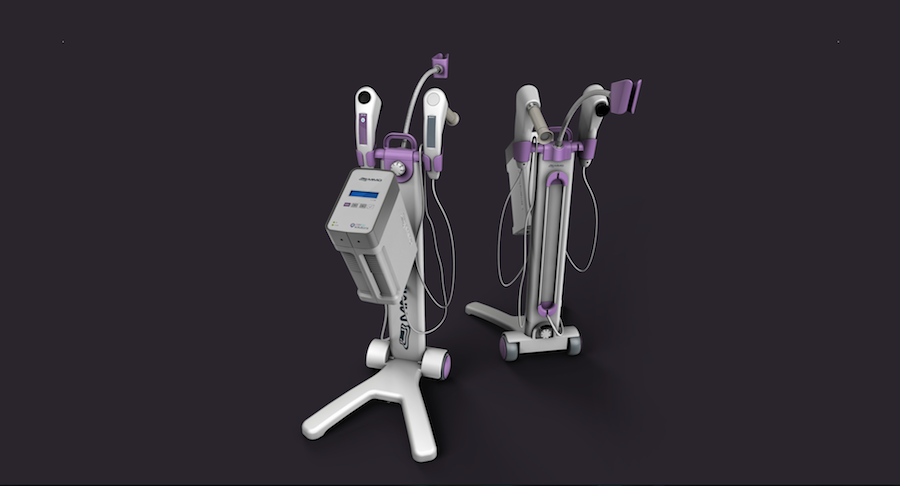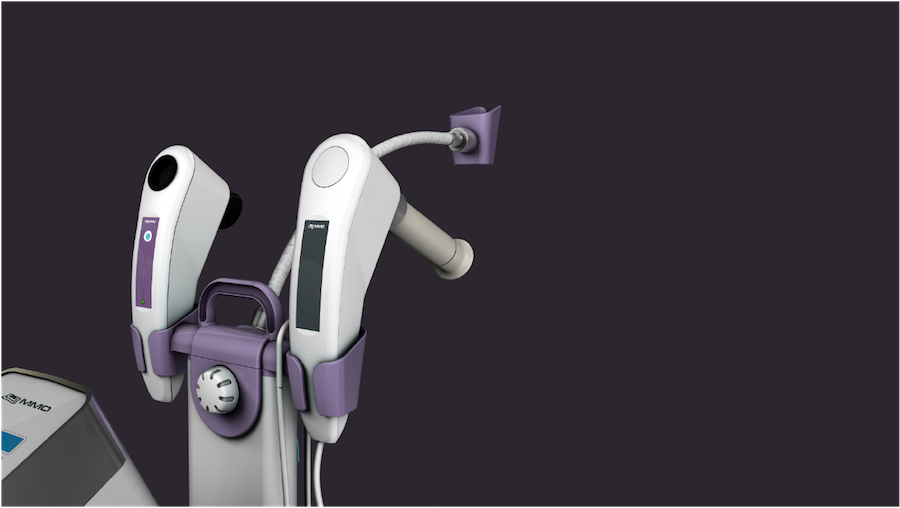The CerCa 150 System is a new and innovative instrument that utilizes photodiagnosis and photodynamic therapy (PDT). Unlike current monitoring methods for cervical cancer, such as the Pap test. The CerCa 150 System immediately detects abnormal tissue. PDT uses noninvasive methods for the photodiagnosis of differentiating normal tissue from abnormal tissue, and a similar method for treating abnormal tissue. CerCa 150 System uses cervical tissue photodiagnosis through tissue autofluorescence detection. After application of a photosensitizing compound, tissue fluorescence is detected with PDT and treatment response, is assessed.
The device includes two components specifically adapted for the detection and treatment of abnormal cervical tissue, and a control component that provides the power supply and controls the activation of both components. The instrument includes an adjustable support for positioning the treatment component enabling proper positioning of the light in the cervical area during treatment.

Detection Component
The device, includes a low intensity laser diode capable of delivering a range of light intensity of approximately 0 mW/cm² to 100 mW/cm². The detection component generates a light beam of about 20 mm in diameter and includes a lens for focusing the light captured and generated, a filter or dichroic mirror to direct light to the cervical tissue, and a second filter for separating a region spectrum of fluorescence light reflected from the cervical tissue for best analysis of the light that returns from the cervical tissue.

Treatment Component
Treatment includes a light source emitted by diodes based on high intensity light (LEDs), and a guide for transmitting light to an area of approximately 20 mm in diameter; an area that provides sufficient lighting to illuminate the cervix. The treatment component focuses the light beam to a well defined area, thus protecting adjacent normal structures.
The LED array is capable of emitting light within a range of intensity of approximately 250 mW/cm² to 0 mW/cm². This light intensity allows adaptation to specific treatment protocols. Thus, the high intensity LED may have an emission of a specific wavelength or a wavelength range corresponding to the absorption spectrum of one or more photosensitizers of approximately 400 nm to 820 nm (blue spectrum , red, and infrared ), which allows the selection of the appropriate wavelength for a particular photosensitizer to selectively activate the appropriate LEDs.





